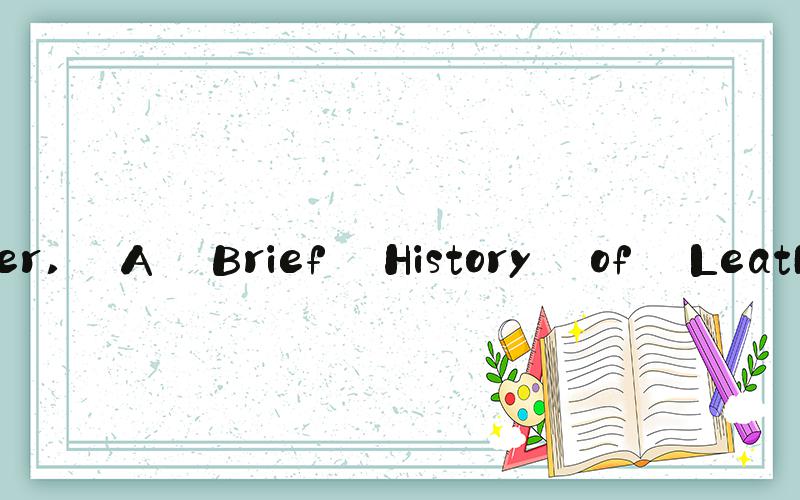
 Leather: The Timeless Material
Leather: The Timeless Material From clothing and accessories to furniture and car interiors, leather is a classic material that has found a place in our lives for centuries. The rich history and cultural significance of leather make it an iconic material that is widely used and loved to this day. In this article, we will dive into the world of leather, exploring its origins, production, and enduring appeal.
A Brief History of LeatherThe use of leather dates back to prehistoric times, when early humans hunted animals for food and used their hides for clothing and shelter. As civilizations developed, leather became an important material for trade and commerce. The ancient Egyptians, Greeks, and Romans all used leather for clothing, armor, and footwear. In medieval Europe, leather was used for bookbinding, and it played a significant role in the development of the printing industry.
In the 20th century, leather became a symbol of rebellion and fashion, thanks to the rise of punk and motorcycle culture. Today, leather is worn by people from all walks of life and is a staple of many fashion collections.
Leather ProductionThe production of leather involves several steps. First, the hides of animals are collected, usually from cows, sheep, pigs, or goats. The hides are then treated with a combination of salt, lime, and enzymes to remove any remaining flesh and hair. The hides are then tanned, which involves adding chemicals to the skin to prevent it from decomposing and to give it the desired characteristics, such as softness, durability, and color.
There are two main types of tanning: vegetable tanning, which uses plant-based chemicals, and chrome tanning, which uses chromium salts. Vegetable-tanned leather tends to be stiffer and more rugged, while chrome-tanned leather is softer and more flexible.
The Appeal of LeatherLeather has many qualities that make it a desirable material. The natural beauty of leather comes from its texture, color, and unique markings. No two pieces of leather are exactly alike, which adds to its allure. Leather is also extremely durable and can last for decades if properly cared for.
Leather is also versatile and can be used in a variety of contexts. From jackets and shoes to belts and bags, leather has found its way into our wardrobes in countless ways. Leather furniture is also popular because it is comfortable, stylish, and long-lasting.
Caring for LeatherLeather can be an investment, so it is important to take care of it. To keep leather looking its best, it should be cleaned regularly with a soft, damp cloth and a leather cleaner specifically designed for the type of leather. Leather should also be protected from moisture, which can cause it to crack or discolor.
If leather gets scratched or scuffed, it can usually be repaired with a leather conditioner or wax. For more serious damage, it is best to take the leather to a professional for repair.
ConclusionLeather has been a part of human history for thousands of years, and it continues to be a beloved material today. Its durability, versatility, and natural beauty make it an ideal material for a wide range of products. With proper care and maintenance, leather can last for decades, becoming better and more beautiful with age.
